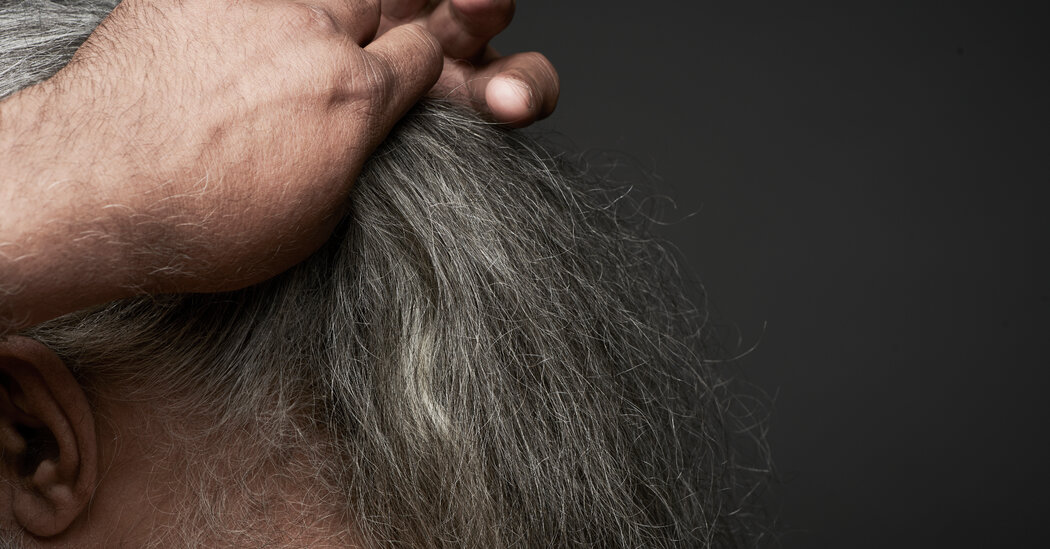Many of the signs of aging are invisible, slow, and subtle — changes in cell division capacity, cardiac output and kidney function don’t exactly show up in the mirror. But gray hairs are one of the most obvious clues that the body isn’t working like it used to.
Our hair turns gray when melanin-producing stem cells stop functioning properly. A new study in mice, but with implications for people and published Wednesday in the journal Nature, provides a clearer picture of the cellular glitches that turn us into silver foxes and vixens.
“This is a really big step toward understanding why we gray,” said Mayumi Ito, an author of the study and a dermatology professor at New York University’s Grossman School of Medicine.
Unlike embryonic stem cells, which develop into all sorts of different organs, adult stem cells have a more set path. The melanocyte stem cells in our hair follicles are responsible for producing and maintaining the pigment in our hair.
Each hair follicle keeps immature melanocyte stem cells in storage. When they’re needed, those cells travel from one part of the follicle to another, where proteins spur them to mature into pigment-producing cells, giving hair its hue.
Scientists assumed that gray hair was the result of that pool of melanocyte stem cells running dry. However, previous studies with mice made Dr. Ito and her co-author, Qi Sun, wonder if hair could lose its pigment even when stem cells are still present.
To learn more about stem cell behavior throughout different phases of hair growth, the researchers spent two years tracking and imaging individual cells in mouse fur. To their amazement, the stem cells traveled back and forth within the hair follicle, transitioning into their mature, pigment-producing state and then out of it again.
“We were surprised,” said Dr. Sun, who said seeing one group of stem cells switching back and forth between mature and young states did not match up with existing explanations.
But as time wore on, the melanocyte cells couldn’t keep up the double act. A hair falling out and growing back takes a toll on the follicle, and eventually, the stem cells stopped making their journey, and thus, stopped receiving protein signals to make pigment. From then on, the new hair growth didn’t get its dose of melanin.
The researchers further explored this effect by plucking hairs from mice, simulating a faster hair growth cycle. This “forced aging” led to a buildup of melanocyte stem cells stuck in their storage place, no longer producing melanin. The mice’s fur went from dark brown to salt-and-pepper.
While the study was conducted with rodents, the researchers say their findings should be relevant to how human hair gets and loses its color. What’s more, they hope their findings could be a step toward preventing or reversing the graying process.
Melissa Harris, a biologist at the University of Alabama at Birmingham who was not involved with the study, said the findings help “clinch” previous evidence she’s seen suggesting that “not all melanocyte stem cells are created equal, and even if you have some left over, they may not be useful.”
Dr. Harris said she takes the study’s findings about its “forced aging” of mouse hair “with maybe a little bit of a grain of salt,” as a plucked hair might not behave the same as naturally aged hair. But she found the study valuable, not just because a cure for graying hair might be a hit with the public; the insights into stem cell behavior might help researchers understand things like cancer and cell regeneration.
“I think sometimes people take the hair for granted,” she said, “but in a sense, it makes it actually really easy for us to see potential ways in which aging or other perturbations affect our bodies.”
Source: Read Full Article
